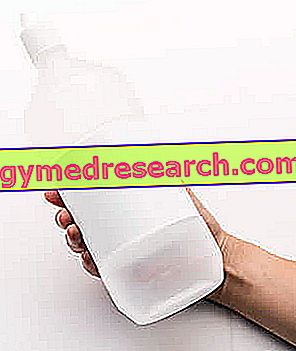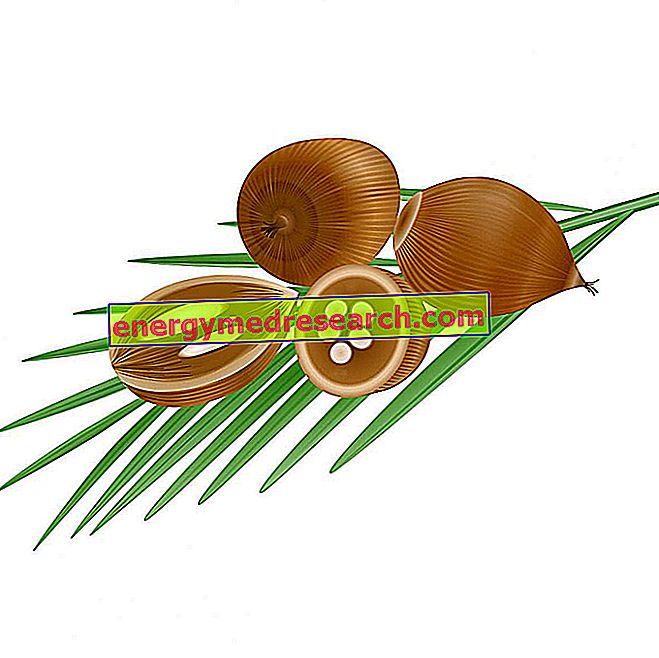What is that
Sodium hypochlorite is an active ingredient with a disinfectant action which - appropriately diluted - is part of the composition of over-the-counter drugs for topical use, intended for the disinfection of injured skin .

There are also more concentrated sodium hypochlorite solutions (ready to use or which require prior dilution before they can be used), which can be used for disinfecting intact skin, disinfecting fruit and vegetables or disinfecting them. of objects used by babies and children (teats, pacifiers, crockery, etc.). These solutions, however, are not drugs, but medical surgical aids.
Did you know that ...
Sodium hypochlorite is the main component of bleach (or bleach), the well-known product used to whiten and stain clothing (not colored) and to clean and disinfect floors and surfaces.
Sodium hypochlorite is also used in water disinfection (for example, it is used in swimming pool water).
Sodium hypochlorite cannot be used pure, as it is too dangerous, since it is caustic and highly irritating. For this reason, it is always properly diluted, until more or less low concentrations are obtained, depending on the intended use.
This article will be sodium hypochlorite used as a disinfectant for topical use. Therefore, reference will be made to solutions diluted in concentrations of 0.05%.
Examples of Medicinal Specialties containing Sodium Hypochlorite
- Amukine MED®
Therapeutic indications
What Sodium Hypochlorite is used for
Given its disinfectant properties, the use of sodium hypochlorite is indicated in the following cases:
- Disinfection of external genitalia;
- Disinfection of injured skin. Therefore - unlike other disinfectants - it can be used on wounds, sores, burns and various types of injuries.
Warnings
Sodium hypochlorite in 0.05% solution is for external use only, therefore, it must not be ingested, as the consequences could be extremely serious, if not fatal.
Furthermore, it is important to remember that the presence of organic residues - such as blood, serum, etc. - can reduce the disinfectant effectiveness of the product. At the same time, applying sodium hypochlorite solution to any blood clots can cause it to melt and can therefore cause bleeding.
Pharmacological Interactions
Because of the potential interactions that can be established, sodium hypochlorite should not be used in conjunction with other drugs or antiseptic products.
However, before using sodium hypochlorite it is necessary to inform your doctor if you are taking - or if you have recently been taken - any type of medication (especially if topical), including medicines without a prescription., herbal products and homeopathic products.
Side effects
Although topical sodium hypochlorite is usually well tolerated by most patients, it can still cause side effects in some individuals.
The most common side effects caused by the product in question are skin irritation and burning.
Furthermore, the possibility of onset of allergic reactions in sensitive subjects should not be forgotten. In several cases, these reactions occurred in the form of allergic contact dermatitis.
Accidental Ingestion
In case of accidental ingestion of the sodium hypochlorite solution for topical use, symptoms such as:
- Irritation and corrosion of gastrointestinal mucosa, associated with pain and vomiting;
- Pharyngeal and laryngeal edema;
- Perforation of the esophagus and / or stomach (fortunately rare event).
If sodium hypochlorite is accidentally ingested, it is necessary to immediately contact the medical help. It is usually recommended to administer water, milk or other liquids and, if necessary, antacids and sodium thiosulphate solutions (the use of these latter substances, of course, is a medical competence).
Action mechanism
Sodium hypochlorite belongs to the category of so-called broad-spectrum chlorine derivatives which, as such, have bactericidal, fungicidal and virucidal activity (that is, they are able to kill these microorganisms).
In water, sodium hypochlorite dissociates into sodium hydroxide and hypochlorous acid. The disinfectant activity is due to the latter compound which - being endowed with high oxidizing power - is able to induce the denaturation of pathogenic microorganism proteins, strongly altering the structure and killing them.
Method of use and Posology
Sodium hypochlorite in a 0.05% solution can be applied directly to damaged skin as needed, but it is advisable not to exceed 5-6 applications per day.
The product can be applied using moistened bandages, or using gauze pads soaked in the solution. Alternatively, irrigations can be performed, washings or baths performed.
If in doubt, it is certainly useful to ask for the advice of your doctor or pharmacist.
Pregnancy and breastfeeding
The use of sodium hypochlorite in concentrations of 0.05% as a topical disinfectant is considered to be safe, therefore, it can also be performed by pregnant women and breastfeeding mothers. However, before using any type of medication (even over the counter), this category of patients should always seek the advice of their doctor.
Contraindications
The main contraindication of topical sodium hypochlorite concerns individuals with known hypersensitivity to sodium hypochlorite itself.



